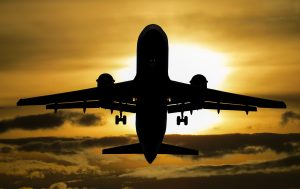
20 Aug SA Space Agency’s Key Role in Aviation
 The name of the South African National Space Agency (SANSA) may suggest that it is concerned with matters far higher than atmosphere-bound aviation. But SANSA performs a key service to all aircraft and their operators.
The name of the South African National Space Agency (SANSA) may suggest that it is concerned with matters far higher than atmosphere-bound aviation. But SANSA performs a key service to all aircraft and their operators.
SANSA is the key custodian of two essential aspects of aviation – the ‘standard reference’ compass against which all aircraft compasses are calibrated, and the provision of warnings of solar storms.
It is an old truism to say that the source of all weather phenomena on Earth is the sun. The term ‘Space Weather’ describes those events that happen in space, which can in particular, disrupt GPS signal quality as well as power grids, navigation and communication systems. SANSA, based at Hermanus in the Western Cape, has been selected by the International Civil Aviation Organization (ICAO) as one of two regional centres to provide Space Weather services, including solar storm forecasts and warnings, to the global aviation sector.
“With aviation, we consider four key risk areas – communication, navigation, avionics and radiation exposure,” said SANSA MD, Dr Lee-Anne McKinnell. “High frequency radio communication, as well as ground and air-based navigation systems, can be affected or knocked out entirely by space weather storms. Delicate electronics can also be damaged, and radiation exposure poses a hazard for crew and passengers, particularly on long haul flights.” Space weather can also have a major knock-on effect on airlines and airports.
The other key competency of SANSA with direct relevance to general aviation is compass accuracy. Despite the rise of modern navigation systems such as GPS and radio aids, compasses are still an essential component of aircraft navigation equipment. Electrical systems may fail, but the Earth’s magnetic field never does. However, it is continuously changing and that requires constant monitoring to determine the degree of compass variation at any specific place.
The need for accurate compass swinging by properly qualified technicians was highlighted by the recent incident of the South African Civil Aviation Authority grounding part of a local Airline’s fleet because it claimed the compass swings had not been properly done. This stranded thousands of high-value tourists over the holiday season.
SANSA points out that a proper compass swing procedure is necessary to determine how to measure and compensate for the magnetic field of the actual aircraft, which will cause a deviation to the compass reading once located in the cockpit, due to the proximity of steel or iron components and by the effects of current flowing in nearby electrical circuits. The compass must therefore be swung at predetermined intervals, usually at the annual Mandatory Periodic Inspection or at any time when the magnetic properties of an aircraft have changed, by for instance the installation of new equipment or a direct lightning strike.
A properly conducted compass swing requires a calibrated reference compass, and it must be done in a magnetically clean environment free of steel structures, underground cables, or equipment that produces magnetic fields, to assure it is free of interference. And as the grounding of the Airline’s fleet demonstrated, it must be done by qualified personnel. SANSA’s Space Science facility in Hermanus is the only SACAA accredited South African facility that offers this type of service with the necessary expertise and facilities to perform training in the compass swing procedure on-site.
SANSA has been presenting training courses on the execution of compass swings to the South African Air Force for more than 20 years and recently hosted a five day Compass Swing Training Course and a three day Compass Swing Refresher Course. The course is presented by SANSA engineers and physicists who have many years of relevant magnetic navigation ground support experience.
For more information on these services and courses email: spacesci-info(at)sansa.org.za



